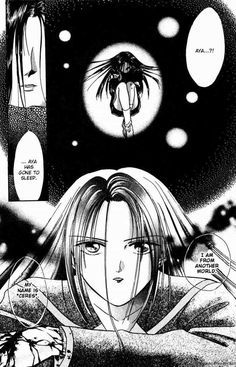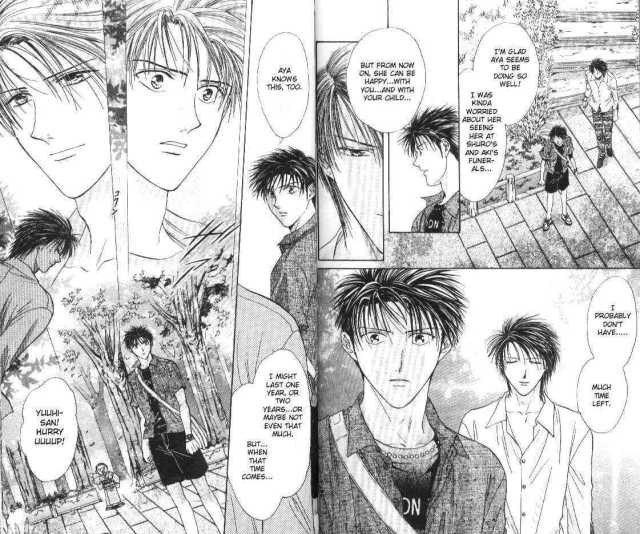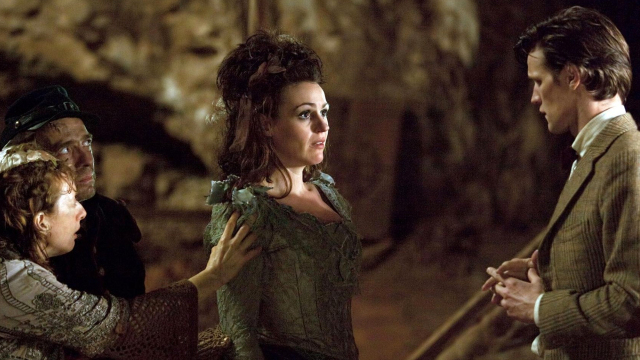Yuu Watase is an author whose work heavily permeated my adolescence. I remember first reading her series Alice 19th and falling in love with the concept of the world, and most importantly, the romantic plot. Later I read Imadoki Nowadays and grew to love Tanpopo and her antics to get a gardening club at her prestigious school. Then I read Absolute Boyfriend, which plays with the idea of having a perfect lover custom-built and the hilarious things that come with it. But Ceres: Celestial Legend was a series that I only read the first volume of initially, and it has a different feel than Watase’s other works. Granted, it’s still a shojo and focuses on a romance, but Watase really expanded the world of Ceres and incorporated so many different elements into her story. You have an ancient family secret, a curse, an evil corporation/organization, reincarnation, supernatural/horror elements, and a classic love triangle all contained within 14 volumes. What interested me most while reading this series was Watase’s conception of Ceres, as well as the other celestial maidens within the story.
Aya Mikage discovers on her 16th birthday that she is the reincarnation of an ancient celestial maiden Ceres, whose sacred robes (hagoromo) were stolen by the man she loved – the Mikage ancestor. Her family then tries to kill her, but she escapes. The remainder of the series is Aya trying to find Ceres’ hagoromo so that Ceres may return back to heaven.

I find the contrast between Ceres’ character and Aya’s character interesting because of their different views on love. Ceres is very cold towards men and has an undying hatred for the original man who stole her robes. Aya is hesitant with love at first but falls deeply in love with Toya as the series progresses. Another interesting contrast is how the characters rely on others in dangerous situations. Aya is essentially powerless and ends up relying on Yuhi and Toya frequently for her own protection, though she will use her own means and resources when she can. Ceres on the other hand rarely relies on others and uses her own will and abilities to save herself. And both Ceres and Aya rely on each other in a way – Ceres’ strength and brutal realism is tempered with Aya’s optimistic attitude and stubbornness.
Ceres, as well as the other celestial maidens, came to Earth with the sole purpose of reproducing more of their kind. It is here that Watase turns traditional femininity into something wickedly empowering. Throughout the whole series, one is left with the feeling that the celestial maidens were wooed and captured by human men, forced to be earthbound forever. However, it is the opposite. It is the maidens who have lured the men into procreating with them and furthering their line.
I surprisingly enjoyed reading this series (despite being a bit older), and I fell in love with the concept Watase fleshed out. Likewise, I always have loved Watase’s art style, particularly with how she designs her heroines. All of her heroines that I can think of are fairly normal sized and realistic. Additionally, Watase did a good job at writing the love portion of the story. Although Aya and Toya end up together in the end (which is sort of this fantastical pairing), it is made obvious by a comment by Toya to Yuhi that he won’t live for much longer, and that Yuhi must take his place in supporting and loving Aya. It reminded me of the ending to Absolute Boyfriend where the created lover ends up dying in a way and the heroine is left without him. I don’t know if I’d say that Watase is advocating for more of a realistic love story, but I think it demonstrates that love can be forged over time (in the case of Yuhi).
 Toya telling Yuhi to take care of Aya.
Toya telling Yuhi to take care of Aya.
An issue that arises from this series is the whole idea of the celestial maidens, and how they kind of further this idea that femininity is foreign or mysterious compared to masculinity. It’s a bit problematic, and there’s not much to refute this. I would argue that Aya’s dominance within the series compared to Ceres reinforces that this is ultimately Aya’s story and not Ceres’. Her stubbornness to keep Ceres contained reinforces this. Aya is not some fantastical being but an adolescent just trying her best with what she’s been given. In the end, Ceres regains her heavenly robes and ascends, leaving Aya to finally reclaim her life fully and to reclaim a sense of normalcy that was lost.
 Toya gives up his power/immortality so that Aya could live. Toya was actually formed out of Ceres’ original hagoromo and was not actually human.
Toya gives up his power/immortality so that Aya could live. Toya was actually formed out of Ceres’ original hagoromo and was not actually human.
Ceres: Celestial Legend is ultimately about how love cannot be possessive or greedy, but rather how it must be sacrificial and giving. The Mikage ancestor’s obsession with Ceres is heavily contrasted with Toya’s sacrificial love for Aya; Toya gives up his immortality for Aya to continue living, whereas the Mikage ancestor wanted to hoard Ceres and her power to himself. Ceres reclaims traditional femininity and motherhood as something that is powerful but also genuine. The celestial maidens’ goal of reproduction is something that is natural and a necessity to them. Their strength and abilities also demonstrate that there is nothing weak about them. Rather, like femininity itself, they are forces to be reckoned with.
Advertisements Share this:


![Alone With You (The Walker Brothers Book 2) by [Adams, Amanda]](/ai/023/544/23544.jpg)


